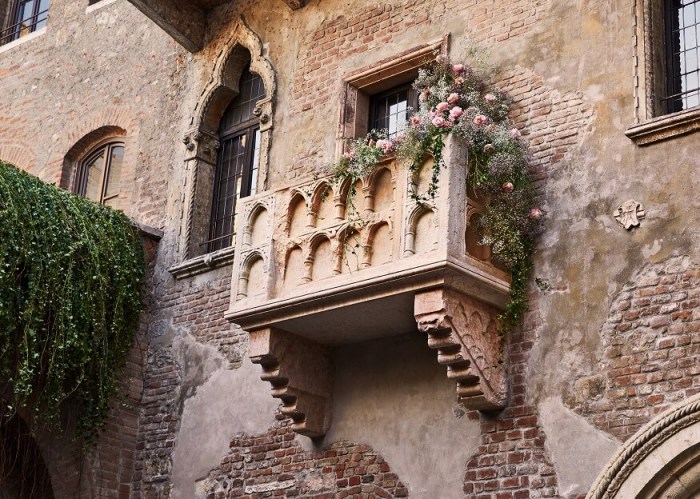In the summer, national parks provide the ultimate escape to the most beautiful and geologically unique places in the nation. There’s something for everyone — whether you’re looking to take in the scenery, camp in the wilderness, or learn about nature through expert-led programs ranging from stargazing to wildlife biology. Not sure which one to visit? We’ve handpicked the 10 best national parks to visit insummer.
Crater Lake National Park
Where: Oregon
For pure visual splendor, it’s hard to beat Crater Lake’s brilliant blue water and 2,000-foot cliffs. Oregon’s crown jewel is also one of the cleanest national parks in the country. The five-mile lake is the clearest in the U.S. and the pristine air offers unobstructed views of up to 100 miles. The world-class hiking keeps active visitors occupied with more than 100 miles of trails. Don’t miss the 2.5-mile gradual walk up the Mount Scott Trail—the park’s highpoint—for picture-perfect views of Crater Lake.
Insider Tip: From July to mid-September, park rangers lead a daily boat tour on Crater Lake. The view from the water is just as dazzling as from the road or trail.
Plan Your Trip: Visit Fodor’s Crater Lake National Park Guide
Acadia National Park
Where: Maine
It may be one of the smaller national parks, but Acadia has an amazingly diverse landscape, from sandy beaches to hardwood forests to granite peaks. The park encompasses most of Mount Desert Island, and some of the smaller surrounding islands. The rugged, rocky coastline has become synonymous with summertime in Maine—an absolute must-visit on the Atlantic coast.
Insider Tip: Cycling is not permitted on any of the park trails, and the scenic Park Loop Road—the main artery for cars—is generally too congested for bike traffic. Instead, ride some (or all) of the 45 miles of carriage roads that wind through the heart of the park. Originally built between 1915 and 1933 by John D. Rockefeller Jr., the crushed-rock surface paths are ideal for biking.
Plan Your Trip: Visit Fodor’s Acadia National Park Guide
Kenai Fjords National Park
Where: Alaska
Located 2.5 hours from Anchorage on the stunning Kenai Peninsula, Kenai Fjords National Park is an Ice Age dreamscape. Think pristine water, giant icebergs, and seemingly endless glaciers. In the summer, long daylight hours and mild temperatures in the 50s and 60s are ideal conditions to try the park’s many adventurous activities like kayaking, hiking, and stand-up paddleboarding. For those interested in a little less action, “flightseeing” by plane is Alaska’s quintessential way to take in the scenery, or try a boat cruise among the icebergs.
Insider Tip: The Alaskan wilderness is about as wild as it gets; in fact, the only part of Kenai Fjords National Park accessible by road is Exit Glacier. While breathtaking in its own right (and most people’s only chance to come face-to-face-with a glacier), there is much more to see and do in Kenai Fjords. Hire an outfitter to tap into the park’s abundant offerings.
Plan Your Trip: Visit Fodor’s Kenai Fjords National Park Guide
Sequoia & Kings Canyon National Parks
Where: California
Set in the shadow of 14,505-foot Mount Whitney (the highest summit in the contiguous United States), Sequoia and Kings National Park is actually two parks administered as one. The combined park is a backpacker’s dream, with more than 850 miles of remote trails through extensive glacial canyons and old-growth forests—home to giant sequoias standing over 250 feet tall. Summer temperatures in the southern Sierra Nevada foothills often exceed 100 degress, but remain pleasant in the sequoia groves where they rarely top 90.
Insider Tip: General Sherman Tree, located at the at the north end of Giant Forest, is the world’s largest tree at 274.9 feet tall and 78.5 feet in circumference. The parking lot adjacent to the tree just off Generals Highway is reserved for handicapped visitors. Everyone else can walk an easy half-mile trail known as the Sherman Tree Trail. To access the trailhead, pass the handicapped parking lot and turn right (east) on Wolverton Road, then take the next right to the Sherman Tree Trail parking area.
Plan Your Trip: Visit Fodor’s Sequoia and Kings Canyon National Parks Guide
Shenandoah National Park
Where: Virginia
Located just 75 miles from Washington D.C., Shenandoah National Park is a popular fall foliage destination. But the park is an equally viable escape in the summer, when the Blue Ridge Mountains keep the temperatures as much as 10 degrees cooler than in the valley. And unlike in the fall, this is not the time to cruise along scenic Skyline Drive in your car. Get out and hike to one of the park’s dozen waterfalls, or camp under an open sky—almost all of Shenandoah’s 196,000 gorgeous acres are open to backcountry camping,
Insider Tip: Shenandoah has more than 500 miles of trails. For local beta, check out the National Park Foundation’s free Owner’s Guide, available online.
Plan Your Trip: Visit Fodor’s Shenandoah National Park Guide
Grand Teton National Park
Where: Wyoming
Grand Teton, the highest peak in the rugged Teton Range, rises 13,775 feet above the Jackson Hole valley floor. Grand Teton National Park’s alpine terrain, including a dozen small glaciers, the Snake River, various streams, and numerous crystalline lakes like the 15-mile-long Jackson Lake, provides visitors a welcome reprieve from the heat of summer. Although Grand Teton is only 10 miles south of Yellowstone National Park, it remains remarkably less crowded.
Insider Tip: The six campgrounds at Grand Teton National Park are first-come, first-serve. Steer clear during peak times like Fourth of July weekend, or if you have the experience (and bear-proof canisters), consider backcountry camping. Alternatively, Grand Teton has several excellent lodging facilities ranging from cabins to resort hotels located inside the park.
Plan Your Trip: Visit Fodor’s Grand Teton National Park Guide
Apostle Islands National Lakeshore
Where: Wisconsin
The Apostle Islands National Lakeshore is comprised of 21 islands—the Jewels of Lake Superior—and the northern tip of Wisconsin. Despite the park’s startling natural beauty and abundant summertime watersports, it’s relatively unknown outside the region. Lake Superior is the cleanest of the Great Lakes, with crystal-clear scuba diving amid old shipwrecks. The islands’ pristine beaches, protected bays, and public docks make for outstanding boating, fishing, and kayaking.
Insider Tip: While the water takes center stage at Apostle Islands National Lakeshore in the summer, there is also great hiking. The rugged 4.5-mile Mainland Lakeshore Trail begins at the Meyers Beach area, passing cliffs above sea caves. Twelve of the islands have maintained trails—more than 50 miles total—leading to historic lighthouses, abandoned quarries, old farm sites, scenic overlooks, beaches, and campsites.
Plan Your Trip: Visit Fodor’s Wisconsin Guide
Zion National Park
Where: Utah
In the southwest, the hot summer weather is perfect for hiking the river at the base of Zion National Park’s upper canyon, otherwise known as The Narrows. The trail is literally the river—trekkers walk, wade, and swim through the 16-mile route, penned in on both sides by 2,000-foot vertical sandstone walls. The hike is strenuous (trekking poles or a walking stick are essential to negotiate the slippery rocks and moving current), but well worth the effort for the unique experience and awe-inspiring scenery.
Insider Tip: The Utah Symphony partnered with the Utah Office of Tourism to offer free concerts at the state’s five national parks in mid-August. The symphony will perform at Zion on August 16 at 8 p.m. at the O.C. Tanner Amphitheatre, located just outside the south entry gate in Springdale.
Plan Your Trip: Visit Fodor’s Zion National Park Guide
Great Smoky Mountains National Park
Where: Tennessee, North Carolina
Great Smoky Mountains is the busiest national park in the nation (with an average of 9 million annual visitors), but part of the magic of this vast swath of wilderness is that it never feels crowded. Encompassing 522,419 woodsy acres along the ridgeline of the section of the Blue Ridge Mountains known as the Great Smokies, the popular national park is one of the largest protected areas in the eastern United States and a UNESCO World Heritage Site.
Insider Tip: More than 1,500 kinds of flowering plants are found at Great Smoky National Park, more than any other national park on the continent. The summer wildflower display includes black-eyed Susans, brilliant red cardinal flowers, small purple-fringed orchids, pink turtleheads, and Turk’s cap lily, among many others. Check the park’s website for suggested wildflower hikes.
Plan Your Trip: Visit Fodor’s Great Smoky Mountains National Park Guide
Mammoth Cave National Park
Where: Kentucky
The cool, dark passages of the world’s longest cave system offer a brilliant reprieve from the summer heat. More than 400 miles of the caves, located entirely within Mammoth Cave National Park, have been explored so far. In the summer, rangers lead more than a dozen different tours including the “Wild Cave Tour” that gets visitors off the standard track to climb, crawl, and squeeze through the more remote sections of the cave. Above ground, enjoy boating, canoeing, kayaking, fishing, and riverside camping on the more than 30 miles of the Green and Nolin Rivers that run through the park.
Insider Tip: In conjunction with the National Park Service’s birthday, Mammoth Cave National Park is offering the popular “Discovery Tour,” appropriate for all ages and ability levels, for free on August 25.
Plan Your Trip: Visit Fodor’s Kentucky Guide
























